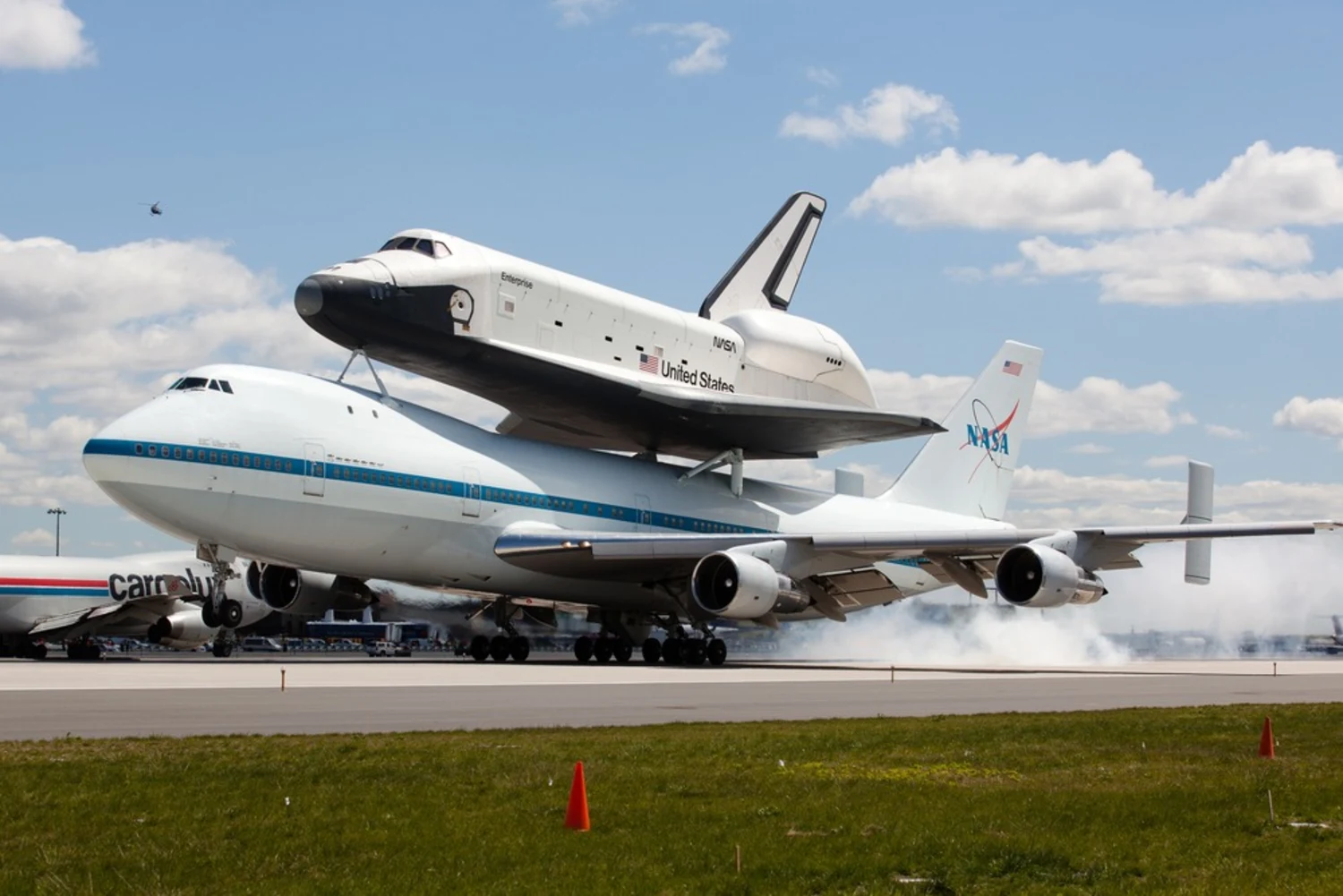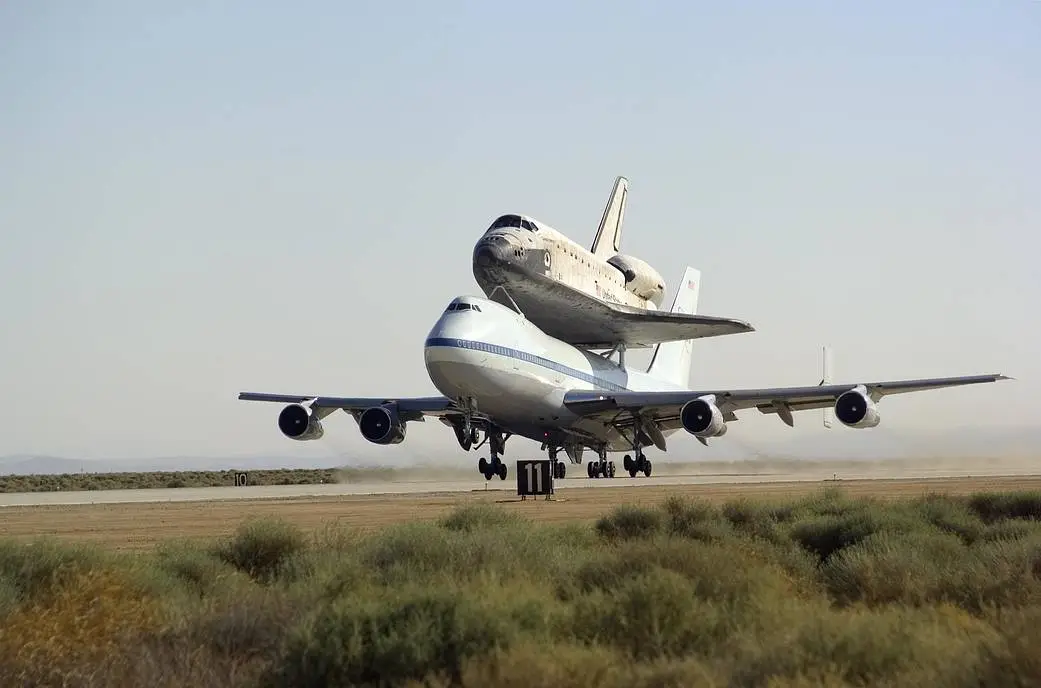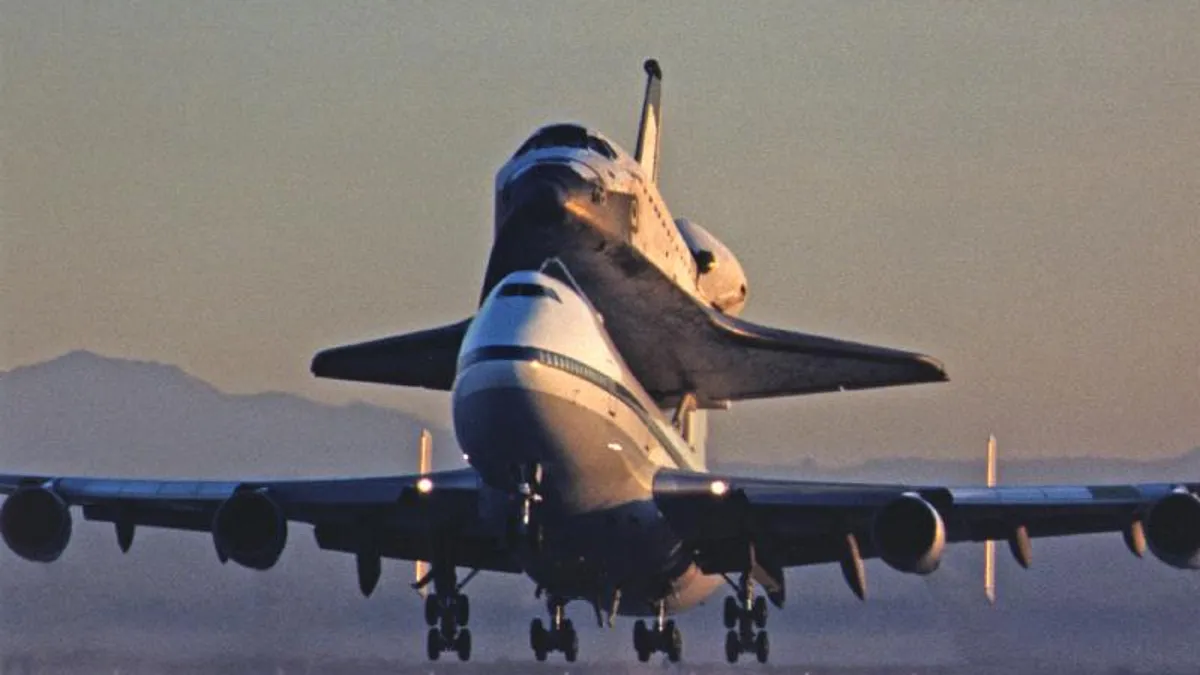NASA needed a super strong plane to carry its space shuttles around. Regular cargo planes just wouldn’t do! So, they came up with a fascinating idea: modify giant Boeing 747 jets to become “shuttle carriers.”
These weren’t your typical 747s, though. NASA actually looked at another big plane, the Lockheed C-5 Galaxy, at first. But they decided the Boeing 747’s design, with its wings lower down on the fuselage, would work better. Plus, they could own a 747 outright, while the C-5 would have belonged to the Air Force.
Their first giant space taxi? A slightly used Boeing 747-100 they bought from American Airlines in 1974. It was just four years old! But before it could haul spaceships, NASA had to give it a major makeover.

Making the Jumbo Jet Fly Higher: Special Upgrades for the Shuttle Carrier
The plane needed some serious upgrades to become a space taxi. First, they had to make it extra strong to hold the weight of a space shuttle on its back! They even stretched the body a bit to make more room. Special beams were added to the fuselage, like three strong arms in the back and two in the front, to hold the shuttle tight during flight.
The tail got a makeover too, with special changes to help the pilot steer the plane with all that extra weight. Inside, most of the seats were ripped out to make space, but they kept the comfy first-class seats for NASA folks on those shuttle-carrying missions.

Testing, Testing, 1, 2, 3: Getting Ready for Takeoff
In 1977, it was time for the big test! They loaded a space shuttle onto the modified 747 for the first time to see how well it would fly. This was called a “captive carry” test. It worked great! They did even more tests that year, including one where they released the shuttle mid-air and let it glide down to land on its own.
This first special 747, named N905NA, had a long history before becoming a space taxi. It actually started out as a regular passenger plane for American Airlines!
Two Become One: A Second Shuttle Carrier Joins the Fleet
Over ten years later, NASA got another 747, named N911NA, to help out with all the shuttle moving. This one was originally built for Japan Airlines. Both N905NA and N911NA became famous for carrying space shuttles around, and they even look pretty similar. There’s one key difference though – N911NA has a slightly longer top deck.
These two special 747s flew many missions, carrying space shuttles between different NASA locations. They were especially busy after the Challenger disaster in 1986, which is why NASA decided to get a second carrier aircraft.

The End of an Era: Retirement for the Shuttle Carriers
Sadly, the party came to an end in 2011 when NASA stopped using space shuttles altogether. Both N905NA and N911NA got retired too. N911NA even got a special last flight in 2012 before settling into its new home at an airpark in California.
Today, these two historic airplanes are on display for everyone to see, forever reminding us of the amazing times when giant jets carried spaceships across the sky!

